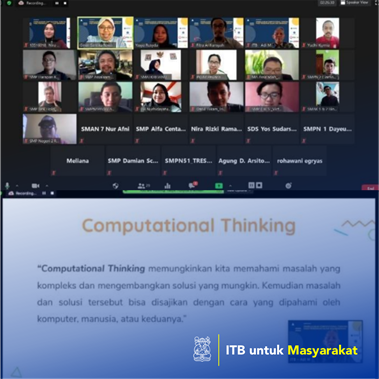

Adi Mulyanto
Computational education is getting more attention in class-class all over the world With the aim of developing digital literacy, media, and information (Rose et al., 2017). Some countries such as in Europe, South Korea, Australia, America, and others have implemented computing education as a curriculum at school (Heinz et al., 2016). ACM, Code.org, Computer Science Teachers Association, Cyber ​​Innovation Center, and National Math and Science Initiative also organized the computer science education community in every state, in the United States to develop guidelines Conceptual for computer science education so that the K-12 Computer Science Framework is created aimed at schools and organizations in the United States in developing standards and curriculum (ACM et al., 2016). Development in Indonesia, Computational Thinking Sciences (Computational Thinking) has not been taught to students in schools such as in other countries. Even though computational Thinking is as important as children's ability to read, write, as well as Arithmetic (Wing, 2006). This PPM activity focuses on the application of Computational Thinking, especially in informatics subjects organized by elementary and secondary schools (first and upper). This activity was carried out by providing computational thinking learning modules for elementary and secondary school education in the Bandung Raya region. The benefit of this PM's reason is to increase awareness of CT and non-profit organizations engaged in CT education such as Bebras Indonesia, and support the objectives of the smart movement, namely providing Computational Thinking (CT) training to the teacher, in the hope that the skills obtained can Improve critical and creative thinking skills of students and provide the foundation to prepare competitive generation who are competitive in the current era of Industrial Revolution.
Application of Writing, Implementation of Social Concern Activities in the form of education / counseling / mentoring
This PPM activity focuses on the application of Computational Thinking, especially in the eyes informatics lessons organized by elementary and secondary schools (first and above). The main target of this activity is actually a student who can get to know and learn about computational thinking, but in this proposal the target is teacher. This is because with the education of teachers, the teacher can forward it to teach students. This PPM activity will involve 30 schools in the first year for each level mentioned above. Of the 30 schools it is expected to be able to capture a minimum of 1 class in each school, so the target of this activity will still be achieved. Before this activity was held, the teachers still did not have sufficient understanding of computational thinking.